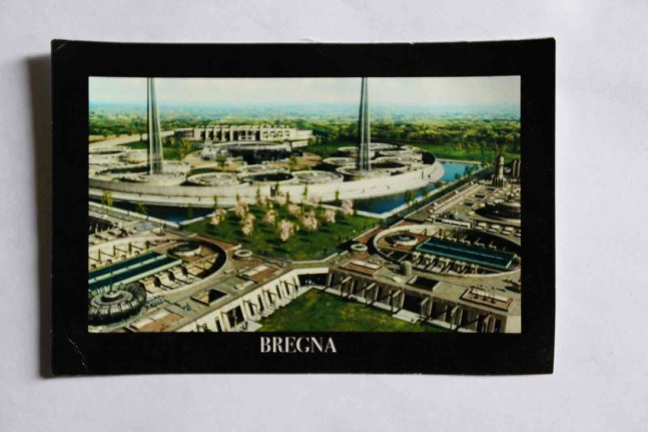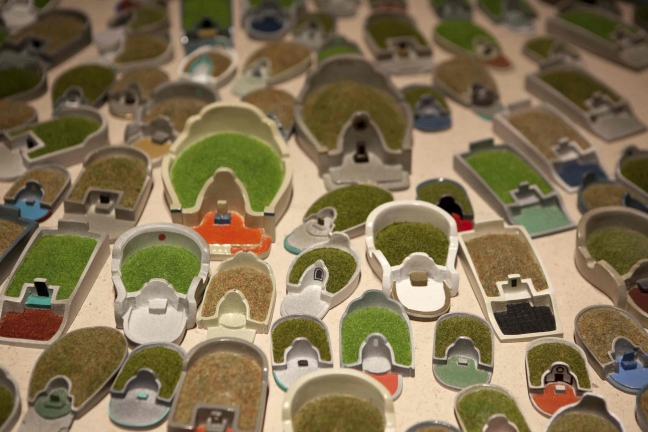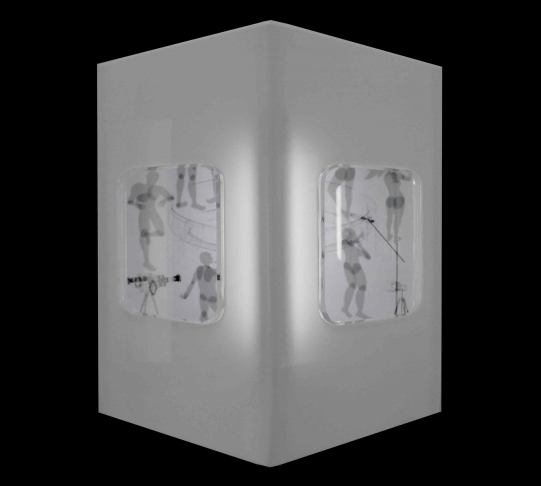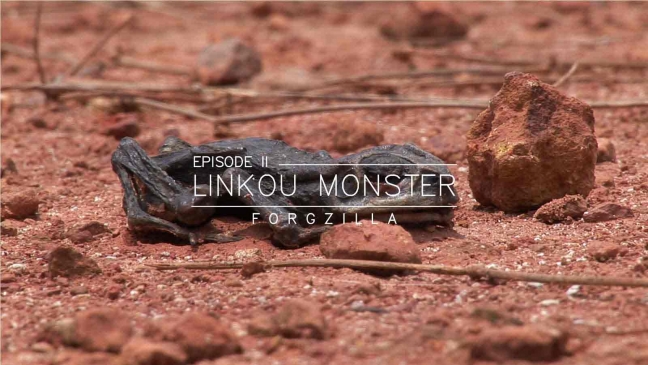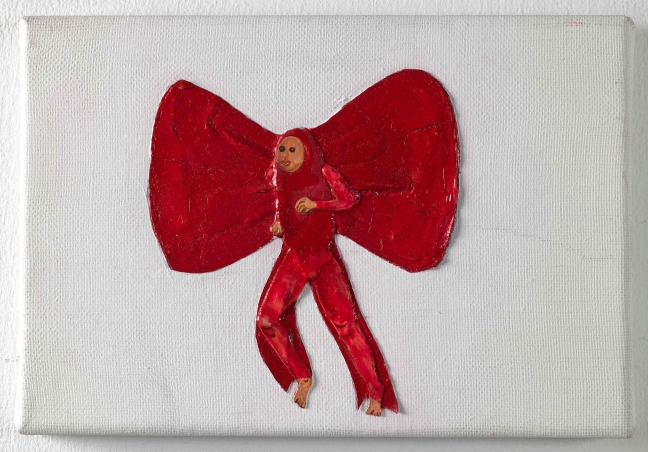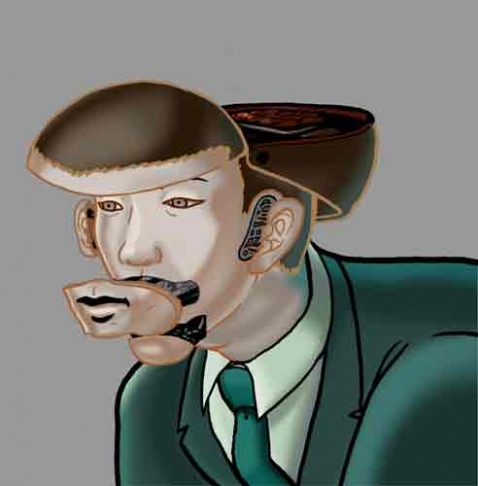prattle
2010.04.02~2010.05.09
09:00 - 17:00
Exhibition Introduction: Certainly we don’t have to expect any serious understanding of the exhibition title, since it’s actually a title of a publication. In the process of making the publication of
Prattle”, writer Wu, Sih-chin analyzed artist Liu, Yu’s drive to create. We thus generate a possibility to make an exhibition and also the way to reverse it. According to Wu, Liu, Yu’s artworks are surrounded with a cipher which does not exist in the artworks. Even the artist herself is not aware of it. The drive actually came from the reference to the Real. The operations brought out the reality, instead of using many actual stories to conclude into a final status of
Impossible-real”. Meanwhile, through the example of libido which Liu, Yu provides, we can thus reverse the operations. Or we can say that it is a prescription we need to take the other way round! We consequently start to imagine another kind of exhibition: An exhibition operation generated from a publication. In this case, a publication is not merely a supporting role to the show. It has become an implication of alibi. We use experimental dialogues in the publication, and we also apply the same
publication-making” concept to the exhibition as criteria. In the aspect of knowledge creating, we also try to blur the roles played by the art publication and exhibition. 7 artists generated 4 relationship diagrams of 21 artworks on different basis. We randomly picked up one diagram and apply it into the actual planning of the venue. The show display would be completed gradually, just like the title of the publication: Prattle. We certainly have a prospect of
Prattle” as a paper-curator rather than simply a publication of art issues.
Prattle”, writer Wu, Sih-chin analyzed artist Liu, Yu’s drive to create. We thus generate a possibility to make an exhibition and also the way to reverse it. According to Wu, Liu, Yu’s artworks are surrounded with a cipher which does not exist in the artworks. Even the artist herself is not aware of it. The drive actually came from the reference to the Real. The operations brought out the reality, instead of using many actual stories to conclude into a final status of
Impossible-real”. Meanwhile, through the example of libido which Liu, Yu provides, we can thus reverse the operations. Or we can say that it is a prescription we need to take the other way round! We consequently start to imagine another kind of exhibition: An exhibition operation generated from a publication. In this case, a publication is not merely a supporting role to the show. It has become an implication of alibi. We use experimental dialogues in the publication, and we also apply the same
publication-making” concept to the exhibition as criteria. In the aspect of knowledge creating, we also try to blur the roles played by the art publication and exhibition. 7 artists generated 4 relationship diagrams of 21 artworks on different basis. We randomly picked up one diagram and apply it into the actual planning of the venue. The show display would be completed gradually, just like the title of the publication: Prattle. We certainly have a prospect of
Prattle” as a paper-curator rather than simply a publication of art issues.
Exhibition Introduction: Certainly we don’t have to expect any serious understanding of the exhibition title, since it’s actually a title of a publication. In the process of making the publication of
Prattle”, writer Wu, Sih-chin analyzed artist Liu, Yu’s drive to create. We thus generate a possibility to make an exhibition and also the way to reverse it. According to Wu, Liu, Yu’s artworks are surrounded with a cipher which does not exist in the artworks. Even the artist herself is not aware of it. The drive actually came from the reference to the Real. The operations brought out the reality, instead of using many actual stories to conclude into a final status of
Impossible-real”. Meanwhile, through the example of libido which Liu, Yu provides, we can thus reverse the operations. Or we can say that it is a prescription we need to take the other way round! We consequently start to imagine another kind of exhibition: An exhibition operation generated from a publication. In this case, a publication is not merely a supporting role to the show. It has become an implication of alibi. We use experimental dialogues in the publication, and we also apply the same
publication-making” concept to the exhibition as criteria. In the aspect of knowledge creating, we also try to blur the roles played by the art publication and exhibition. 7 artists generated 4 relationship diagrams of 21 artworks on different basis. We randomly picked up one diagram and apply it into the actual planning of the venue. The show display would be completed gradually, just like the title of the publication: Prattle. We certainly have a prospect of
Prattle” as a paper-curator rather than simply a publication of art issues.
Prattle”, writer Wu, Sih-chin analyzed artist Liu, Yu’s drive to create. We thus generate a possibility to make an exhibition and also the way to reverse it. According to Wu, Liu, Yu’s artworks are surrounded with a cipher which does not exist in the artworks. Even the artist herself is not aware of it. The drive actually came from the reference to the Real. The operations brought out the reality, instead of using many actual stories to conclude into a final status of
Impossible-real”. Meanwhile, through the example of libido which Liu, Yu provides, we can thus reverse the operations. Or we can say that it is a prescription we need to take the other way round! We consequently start to imagine another kind of exhibition: An exhibition operation generated from a publication. In this case, a publication is not merely a supporting role to the show. It has become an implication of alibi. We use experimental dialogues in the publication, and we also apply the same
publication-making” concept to the exhibition as criteria. In the aspect of knowledge creating, we also try to blur the roles played by the art publication and exhibition. 7 artists generated 4 relationship diagrams of 21 artworks on different basis. We randomly picked up one diagram and apply it into the actual planning of the venue. The show display would be completed gradually, just like the title of the publication: Prattle. We certainly have a prospect of
Prattle” as a paper-curator rather than simply a publication of art issues.
We’d love to discover any kind of reading methods, trying to prospect an alternative of production. In this case, “Prattle” try to create an “imagined art community” by some private friendships. The publication is combined of some borderless chats of Taipei Fine Art Award, Kaohsiung Fine Art Award, all the way to Tokyo Art Award Marunouchi. Thus, we try to rethink the possibility of a campus art award. Excerpts from prattle: A kind of deploy of movie scenes and a pirate of form Wu, Sih-chin At the first sight, we can barely grasp any stylish operation of form in Liu, Yu’s artwork. We can even say that it’s hard to find any consistent thread in each artwork. But I would like to use a different point of view which comes from my experiences of talking with her on artworks. Maybe we can trace back to the artists personal habits, she likes to watch movies. Unlike a research of movie, she watches movies like every one of us. Maybe the habit of watching a lot of movies contributes to the art-creating model she is used to. In Liu, Yu’s artworks, if we pay close attention, we will find a feature similar to movies. This analogue to movies is not based on any professional knowledge, but rather a basic or general understanding of movie that we all have. We all reflect our personal experience to the movie stories. Liu, Yu’s artwork “The future cities which I have never owned” is actually a parody of “the reflection of personal experience”. The artist collected many scenes of “future cities” from the movies. Then she printed those scenes on postcards and handed the postcards with the sci-fi movies to her friends. She asked her friends to imagine themselves as the people who live in those future cities, write down their words on the postcards and then send back or return to her. We can see the psycho status of this artwork. When Liu, Yu uses the image of “future cities” on the postcards, she actually terminates our imagination of those future cities. We can thus realize a fact: Maybe our imaginations of cities in the future actually come from the movies we watched. The writers of postcards place a common sense into the artworks. When we read the words of the writer’s personal imaginations and interpretations of inexistent cities on the postcard, we can see the romantics and humors in the words without any translation and receive an individualized future city apart from the original movie… Axis of Wu, Sih-chin’s artworks / Anti-axis of Wu Sih-chin’s artworks GomiKitten (Gomi+PainFreeKitten) The visual meaning of diminution by PainFreeKitten: First of all, Wu, Sih-chin uses the forming of sculpture to perform diminution, trying to discuss the image making. To be more precisely, it means the movement from sculptures to images. For example, the disaster model series, and the photos of thumbs, all try to wipe away the pathos which can arouse emotional feelings. It is a cancellation of the depth and mystery of the objects. He sets apart the viewers from the “distance of an affected viewing experience”. This also recalls Sam Su’s points of view on Wu, Sih-chin’s intention to “modify the distance”. “One axis, two worlds” by Gomi: Wu, Sih-chin creates a minified disaster which you can never be on the spot. The minified buildings actually create a feeling of distance. The feeling of distance is like the description “The longest distance is when you are in front of me but you are not in my world.” (We live in a 1:1 world but “Mr. Tsai’s home” is in a 1:25 world.) It’s a feeling like the different worlds of human-beings and ghosts. So the axis actually presents a situation in which “The disaster has happened, the fact separated us from someone we love, it also created a different world emotionally.” The distance is not the distance seen by people who’s dying, nor a simulation of the distance between disaster and tragedy. It is at the beginning not understandable, so we can only observe it indifferently. A short-sighted eye which can see the ghost… Talks with Tsai, Yi-hsun Interviewer Chen, Zi-an Q: You have been creating the tension between cold forms and hot content. But the distance between factors tends to be replaced by the constant operation style. What do you say about it? A: In the work “Play an insignificant role”, I overlap the shape of human bodies. I always want to use the overlapping images to discuss the sense of distance. Besides, I put on a blurry cover after finishing the images, trying to create the warmth similar to paintings in my work. Q: You talk about your operation of images down into details. I would consider that as a reading of the work’s content. But how do you decide to use this cold style to operate images? A: I’ve been thinking of it for a long time. In my creation experience, I am more used to computer mouse than real pen. The 3D model could be turned over up side-down in the screen. This is for me a real touch by seeing. I can take care of 3 dimensions more thoroughly. This is even real than hand paintings for me. To be honest, in creating virtual spaces, it takes more detail observation to reach the effect of “real”. I don’t think hand-painting is able to do that. Q: You use acrylic covers to constrain every picture. The acrylic cover is around half-human size while the bodies inside are all around ten centimeters. How do you decide the portion of the two? A: I used to print out the size only slightly smaller than real human in my first year of graduate school. The light shed on the works like X-rays. I found out that it looks like a medical examination. But instead of a physical one, it looks more like a mental one. Recently I modified my display of works. With a more focused way, even like peeping, the viewers are required to be very close to the artwork to find, to distinguish, to analyze. It is a status like a medical examination. The acrylic cover’s thickness ensures a feeling of texture. I want to use something thick to analogue the sense of screen or an illuminant… Talks with Yeh, Chen-Yu Interviewer Aphon Q: Among your artworks, what cause my attention are “Build a Boat by the River” and “Go Home after Ebbing”. Let’s take a look of “Build a Boat by the River”. It reminds me of the idea of “the pick-ups”. A: I picked up the litter along the river Tam-sui and bounded it into a small boat which I sailed out at Bali. Q: Many artists focused on the meaning of using pick-ups. For example, they showed the contrast by using the pick-ups for coloring, shaping and structuring, trying to stress that the abandoned pick-ups are actually useful. However, the pick-ups have been used differently in your artworks. In “Build a Boat by the River”, I don’t think you are creating any form or shape. Though you made the pick-ups into a boat, basically you did not used the contrast or the comparison mentioned above. I think the pick-ups are structuring meaningless to the boat, they’re something like a minimum. In other words, the boat is merely a combination of those minimum stuffs (basic items). The combination of the basic items can lead us to some metaphorical ideas…… Talks with Lin, Shin-chi Interviewers Chen, Zi-an and Luan, Yong-han Q: I think you physically worked a lot in creating artworks, though you said that working in the art-creating process should be regarded as a part of artwork itself. Are you intended to say so? What you care is the action of painting or the painting itself? A: They are both very important factors, but I don’t really cherish my artworks after I finished them for awhile, though I don’t really want to give them to somebody else. Those small pieces are too alike the practices. In some of them I only tried to deal with some feelings. For example, in one I turned a comb into fingers, trying to use it to comb the hair. The comb touched your head just like a bunch of small fingers combing your head. Q: I think it’s actually already beyond the idea of combing hairs. Why didn’t you make a real comb like that? A: This is a problem of imagination. You use your eyes to see the painting. But with imagination, you can feel the small fingers combing your head in your mind. Isn’t that funny? Q: What makes your paintings different from illustrates? I think to write down words on a painting is a very dangerous but also thrilling idea. Many meanings and distance are created in between. Do you use words to convey what you can’t draw down into images? A: In the painting “I Don’t Need to be Consumed, I Don’t Have the Time”, I boomed up the concept by the words, but I need to use paintings to actually explain those words…… Linkou in mind but no monster in the screen. –Talks on Wu, Chi-yu’s Linkou monster with perspective from mainstream images to self position in the environment. Wu, Wen-chun In the five different sections of short film “Linkou Monster”, artist uses a lower angle shot which is very close to the ground, and close-up shots on objects collected on specific sites, trying to narrate the stories of monsters in Linkou. If we pay more attention to the perspective of images, the way of moving the shot, swift of scenes, cutting of each scene and all the image-making methods to perform a narrative, we can realize the subtle differences among sections. However, what’s easy to be seen is the artist’s careful operation of being “outside of the film”. It is an obvious feature of the artworks as well as a consistency in artworks series. Thus, the monsters can fit into the local scenery thoroughly. It is a reverse of mainstream films which always exaggerate the existence of the monsters and drastic storyline thus make the viewers falling into a status of amnesia. “Linkou Monster” tries to use the operations of images to discover the possibility of ecological documentary. The artist interrupts the film-making outside of the film. With the “Playing house at the country yard” (said the artist), the site Linkou (the pond and the field along the road) has been involved in an art action. It’s also a sampling of the current environment in Linkou, use the action itself as a micro movement to communicate with the environment. Artworks become a medium to postpone the change of the environment. Artist uses film-making as a way to record the ecological environment in Linkou, trying to narrate his own relationship with the place… On CHEN, CHING-YUAN’s different operations of animations. Chen, Zi-an The lines CHEN,CHING-YUAN used in static paintings or animated images are not focused on representing the stories of any moving scene or human emotion. If we take a deeper look of the animation works inlaid in the human body sculptures, we will find that there’s only one movement in each animation work: It is not a simulation of the interaction between character and virtual space, but a close-up shot (instead of a moving shot )on the deploy of the scene. Compare to the commercial animations which are used to simulate a scene (they tend to use the moving shots to describe a space like a camera, even though they use static lines, that’s also an implication of speed or direction ), CHEN, CHING-YUAN’s work provide rather limited information. We can easily notice the structural background of the animations. For example, the circles for dialogues turn into farts. It is an honest display of the movement of lines……
We’d love to discover any kind of reading methods, trying to prospect an alternative of production. In this case, “Prattle” try to create an “imagined art community” by some private friendships. The publication is combined of some borderless chats of Taipei Fine Art Award, Kaohsiung Fine Art Award, all the way to Tokyo Art Award Marunouchi. Thus, we try to rethink the possibility of a campus art award. Excerpts from prattle: A kind of deploy of movie scenes and a pirate of form Wu, Sih-chin At the first sight, we can barely grasp any stylish operation of form in Liu, Yu’s artwork. We can even say that it’s hard to find any consistent thread in each artwork. But I would like to use a different point of view which comes from my experiences of talking with her on artworks. Maybe we can trace back to the artists personal habits, she likes to watch movies. Unlike a research of movie, she watches movies like every one of us. Maybe the habit of watching a lot of movies contributes to the art-creating model she is used to. In Liu, Yu’s artworks, if we pay close attention, we will find a feature similar to movies. This analogue to movies is not based on any professional knowledge, but rather a basic or general understanding of movie that we all have. We all reflect our personal experience to the movie stories. Liu, Yu’s artwork “The future cities which I have never owned” is actually a parody of “the reflection of personal experience”. The artist collected many scenes of “future cities” from the movies. Then she printed those scenes on postcards and handed the postcards with the sci-fi movies to her friends. She asked her friends to imagine themselves as the people who live in those future cities, write down their words on the postcards and then send back or return to her. We can see the psycho status of this artwork. When Liu, Yu uses the image of “future cities” on the postcards, she actually terminates our imagination of those future cities. We can thus realize a fact: Maybe our imaginations of cities in the future actually come from the movies we watched. The writers of postcards place a common sense into the artworks. When we read the words of the writer’s personal imaginations and interpretations of inexistent cities on the postcard, we can see the romantics and humors in the words without any translation and receive an individualized future city apart from the original movie… Axis of Wu, Sih-chin’s artworks / Anti-axis of Wu Sih-chin’s artworks GomiKitten (Gomi+PainFreeKitten) The visual meaning of diminution by PainFreeKitten: First of all, Wu, Sih-chin uses the forming of sculpture to perform diminution, trying to discuss the image making. To be more precisely, it means the movement from sculptures to images. For example, the disaster model series, and the photos of thumbs, all try to wipe away the pathos which can arouse emotional feelings. It is a cancellation of the depth and mystery of the objects. He sets apart the viewers from the “distance of an affected viewing experience”. This also recalls Sam Su’s points of view on Wu, Sih-chin’s intention to “modify the distance”. “One axis, two worlds” by Gomi: Wu, Sih-chin creates a minified disaster which you can never be on the spot. The minified buildings actually create a feeling of distance. The feeling of distance is like the description “The longest distance is when you are in front of me but you are not in my world.” (We live in a 1:1 world but “Mr. Tsai’s home” is in a 1:25 world.) It’s a feeling like the different worlds of human-beings and ghosts. So the axis actually presents a situation in which “The disaster has happened, the fact separated us from someone we love, it also created a different world emotionally.” The distance is not the distance seen by people who’s dying, nor a simulation of the distance between disaster and tragedy. It is at the beginning not understandable, so we can only observe it indifferently. A short-sighted eye which can see the ghost… Talks with Tsai, Yi-hsun Interviewer Chen, Zi-an Q: You have been creating the tension between cold forms and hot content. But the distance between factors tends to be replaced by the constant operation style. What do you say about it? A: In the work “Play an insignificant role”, I overlap the shape of human bodies. I always want to use the overlapping images to discuss the sense of distance. Besides, I put on a blurry cover after finishing the images, trying to create the warmth similar to paintings in my work. Q: You talk about your operation of images down into details. I would consider that as a reading of the work’s content. But how do you decide to use this cold style to operate images? A: I’ve been thinking of it for a long time. In my creation experience, I am more used to computer mouse than real pen. The 3D model could be turned over up side-down in the screen. This is for me a real touch by seeing. I can take care of 3 dimensions more thoroughly. This is even real than hand paintings for me. To be honest, in creating virtual spaces, it takes more detail observation to reach the effect of “real”. I don’t think hand-painting is able to do that. Q: You use acrylic covers to constrain every picture. The acrylic cover is around half-human size while the bodies inside are all around ten centimeters. How do you decide the portion of the two? A: I used to print out the size only slightly smaller than real human in my first year of graduate school. The light shed on the works like X-rays. I found out that it looks like a medical examination. But instead of a physical one, it looks more like a mental one. Recently I modified my display of works. With a more focused way, even like peeping, the viewers are required to be very close to the artwork to find, to distinguish, to analyze. It is a status like a medical examination. The acrylic cover’s thickness ensures a feeling of texture. I want to use something thick to analogue the sense of screen or an illuminant… Talks with Yeh, Chen-Yu Interviewer Aphon Q: Among your artworks, what cause my attention are “Build a Boat by the River” and “Go Home after Ebbing”. Let’s take a look of “Build a Boat by the River”. It reminds me of the idea of “the pick-ups”. A: I picked up the litter along the river Tam-sui and bounded it into a small boat which I sailed out at Bali. Q: Many artists focused on the meaning of using pick-ups. For example, they showed the contrast by using the pick-ups for coloring, shaping and structuring, trying to stress that the abandoned pick-ups are actually useful. However, the pick-ups have been used differently in your artworks. In “Build a Boat by the River”, I don’t think you are creating any form or shape. Though you made the pick-ups into a boat, basically you did not used the contrast or the comparison mentioned above. I think the pick-ups are structuring meaningless to the boat, they’re something like a minimum. In other words, the boat is merely a combination of those minimum stuffs (basic items). The combination of the basic items can lead us to some metaphorical ideas…… Talks with Lin, Shin-chi Interviewers Chen, Zi-an and Luan, Yong-han Q: I think you physically worked a lot in creating artworks, though you said that working in the art-creating process should be regarded as a part of artwork itself. Are you intended to say so? What you care is the action of painting or the painting itself? A: They are both very important factors, but I don’t really cherish my artworks after I finished them for awhile, though I don’t really want to give them to somebody else. Those small pieces are too alike the practices. In some of them I only tried to deal with some feelings. For example, in one I turned a comb into fingers, trying to use it to comb the hair. The comb touched your head just like a bunch of small fingers combing your head. Q: I think it’s actually already beyond the idea of combing hairs. Why didn’t you make a real comb like that? A: This is a problem of imagination. You use your eyes to see the painting. But with imagination, you can feel the small fingers combing your head in your mind. Isn’t that funny? Q: What makes your paintings different from illustrates? I think to write down words on a painting is a very dangerous but also thrilling idea. Many meanings and distance are created in between. Do you use words to convey what you can’t draw down into images? A: In the painting “I Don’t Need to be Consumed, I Don’t Have the Time”, I boomed up the concept by the words, but I need to use paintings to actually explain those words…… Linkou in mind but no monster in the screen. –Talks on Wu, Chi-yu’s Linkou monster with perspective from mainstream images to self position in the environment. Wu, Wen-chun In the five different sections of short film “Linkou Monster”, artist uses a lower angle shot which is very close to the ground, and close-up shots on objects collected on specific sites, trying to narrate the stories of monsters in Linkou. If we pay more attention to the perspective of images, the way of moving the shot, swift of scenes, cutting of each scene and all the image-making methods to perform a narrative, we can realize the subtle differences among sections. However, what’s easy to be seen is the artist’s careful operation of being “outside of the film”. It is an obvious feature of the artworks as well as a consistency in artworks series. Thus, the monsters can fit into the local scenery thoroughly. It is a reverse of mainstream films which always exaggerate the existence of the monsters and drastic storyline thus make the viewers falling into a status of amnesia. “Linkou Monster” tries to use the operations of images to discover the possibility of ecological documentary. The artist interrupts the film-making outside of the film. With the “Playing house at the country yard” (said the artist), the site Linkou (the pond and the field along the road) has been involved in an art action. It’s also a sampling of the current environment in Linkou, use the action itself as a micro movement to communicate with the environment. Artworks become a medium to postpone the change of the environment. Artist uses film-making as a way to record the ecological environment in Linkou, trying to narrate his own relationship with the place… On CHEN, CHING-YUAN’s different operations of animations. Chen, Zi-an The lines CHEN,CHING-YUAN used in static paintings or animated images are not focused on representing the stories of any moving scene or human emotion. If we take a deeper look of the animation works inlaid in the human body sculptures, we will find that there’s only one movement in each animation work: It is not a simulation of the interaction between character and virtual space, but a close-up shot (instead of a moving shot )on the deploy of the scene. Compare to the commercial animations which are used to simulate a scene (they tend to use the moving shots to describe a space like a camera, even though they use static lines, that’s also an implication of speed or direction ), CHEN, CHING-YUAN’s work provide rather limited information. We can easily notice the structural background of the animations. For example, the circles for dialogues turn into farts. It is an honest display of the movement of lines……
